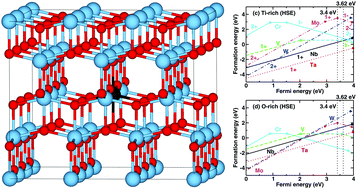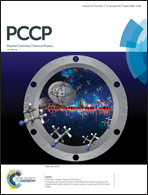Doping anatase TiO2 with group V-b and VI-b transition metal atoms: a hybrid functional first-principles study
Abstract
We investigate the role of transition metal atoms of group V-b (V, Nb, and Ta) and VI-b (Cr, Mo, and W) as n- or p-type dopants in anatase TiO2 using thermodynamic principles and density functional theory with the Heyd–Scuseria–Ernzerhof HSE06 hybrid functional. The HSE06 functional provides a realistic value for the band gap, which ensures a correct classification of dopants as shallow or deep donors or acceptors. Defect formation energies and thermodynamic transition levels are calculated taking into account the constraints imposed by the stability of TiO2 and the solubility limit of the impurities. Nb, Ta, W and Mo are identified as shallow donors. Although W provides two electrons, Nb and Ta show a considerably lower formation energy, in particular under O-poor conditions. Mo donates in principle one electron, but under specific conditions can turn into a double donor. V impurities are deep donors and Cr shows up as an amphoteric defect, thereby acting as an electron trapping center in n-type TiO2 especially under O-rich conditions. A comparison with the available experimental data yields excellent agreement.


 Please wait while we load your content...
Please wait while we load your content...